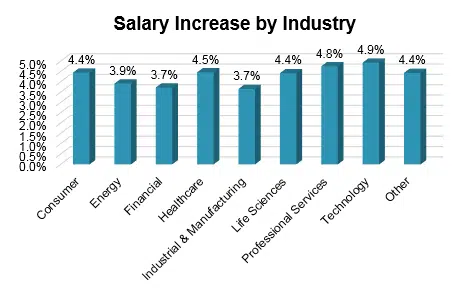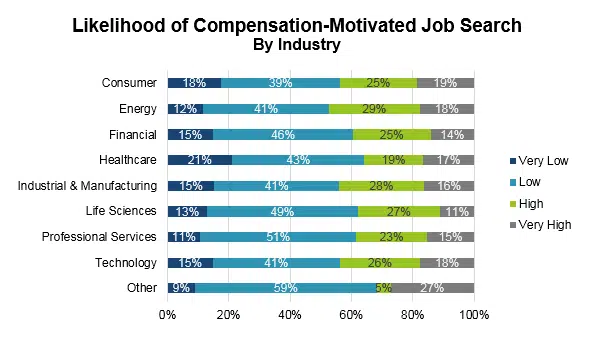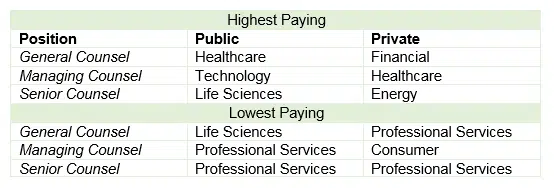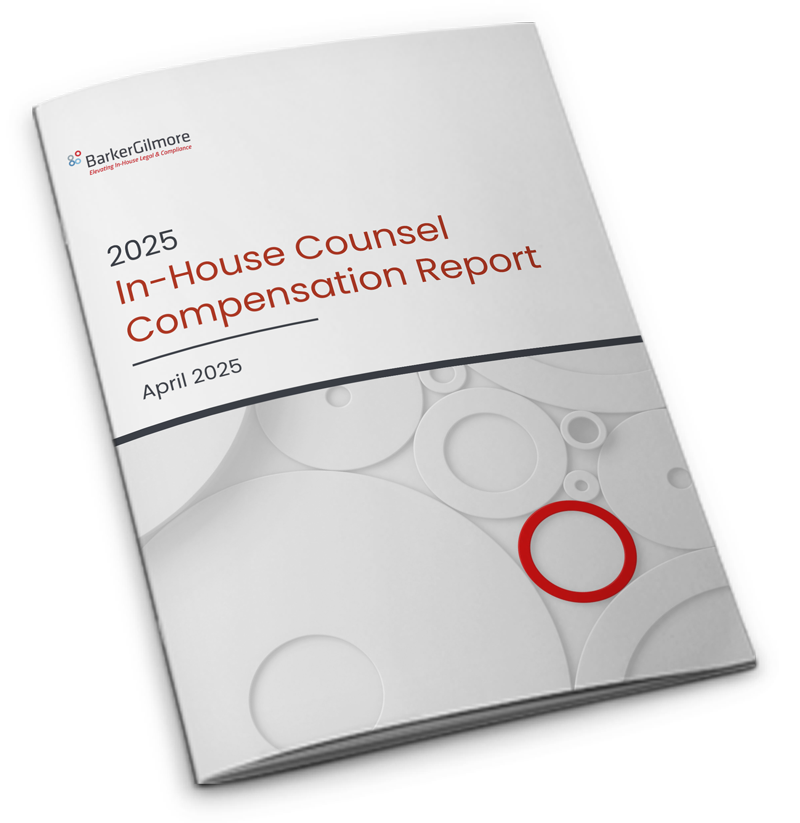As key players in the executive search industry, our team is exposed to both sides of the coin when it comes to compensation. On a daily basis, we advise client organizations in pursuing solutions to maximize performance and talent in their legal departments, while also networking with potential job candidates, who seek assurance that their pay grade meets industry trends.
This year, while compiling the annual In-House Counsel Compensation Report, we aimed to create an all-encompassing guide to benchmark compensation for both individuals and organizations. To do so, we administered a detailed survey to thousands of in-house counsel across the country. Our sample included lawyers at different levels, from every industry and practice area, in varying geographic locations, at both public and private companies, and the results are compelling!
Among many data points and correlations, we isolate five of the most prominent trends for compensation in the in-house legal industry:
Key Compensation Trends
- Annual Salary Increase Rates: The median annual salary increase rate for all positions across industries is 4.3%, up 0.1% from the previous year, with the technology sector experiencing the highest median increase rate of 4.9%. This year’s increase rates across industries show much less variation than in the year prior.
- Peer Comparison: 43% of respondents believe their compensation is below or significantly below that of their peers in other organizations, with litigators reporting the greatest dissatisfaction. Those in the real estate and banking/finance practice areas express the highest levels of satisfaction with over 20% reporting compensation above or significantly above average.
- Who’s on the Market: 41% of respondents indicate that they would consider a new position within the next year due to compensation issues. Similar to last year, those in the energy industry report the greatest likelihood of a job search in the next year, while those in the healthcare industry are the least likely to engage in a job search. In-house counsel who identify with a generalist practice area are most likely to consider a move for compensation issues, while those in the insurance practice report least likely to move.
- Public vs. Private: At the General Counsel level, a statistically significant difference exists between the compensation of those at publicly-traded companies and those at private companies. The size of this gap decreases as position level decreases; smaller disparities exist at the Managing Counsel and Senior Counsel levels.The Long Term Incentive (LTI) compensation component poses the greatest disparity across all position levels; LTI is much higher for public-company employees and sometimes non-existent for private-company employees.
- Industry Highs & Lows: Unlike the previous year, industry trends are not uniform across position levels. The following chart summarizes the highest and lowest paying industries for each position (based on total compensation):
In addition to these five key trends, the report features a breakdown of specific compensation figures for each of the following positions: General Counsel, Managing Counsel, and Senior Counsel. Check out the full BarkerGilmore 2017 In-House Counsel Compensation Report for a detailed guide to benchmarking compensation!
Connect with a legal recruiting advisor
* indicates required fields








